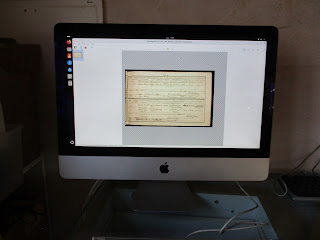Maybe I have a new project.
Up at the Athenaeum, we have a heritage book collection –
basically all the books they bought between 1862 and the early 1970s when it
ceased to function as a library and reading room.
As far as we can tell they never threw anything out, only
replacing books if they remained popular, which gives us a
picture of reading tastes, and how they changed from the Goldrush era
onwards.
Now we have an excel spreadsheet listing the roughly three
thousand or so books but data quality is not great.
Publishers and authors names mis-spelled, different
abbreviations for the same publisher,
etc etc.
I’ve spent the last few weeks checking publishers’ names to
see if it was fixable, but really it’s not, the simplest solution is to
recatalogue the entire collection.
This of course is a problem in itself, we’re not a library,
we don’t have a catalogue system as such, all we want to do is catalogue the
collection as accurately as possible, and then load the data into Victorian
Collections for long term preservation.
Well, I think we have a solution - LibraryThing.
Originally designed to help people catalogue their personal
libraries, it’s been used successfully to catalogue
small research libraries.
While is does have add on modules to give it the functionality
of a larger scale OPAC, we only need its cataloguing capabilities. After all we
are not going to add, lend, or deaccession material.
Data can be exported in both excel and MARC format, which
means that not only could be load the data into Victorian Collections, we could
potentially load it into a Library Management system, such as our local library’s
Sirsi Dynix system, if desired.
But the real killer is that we can validate entries against
both the British Library and the National Library of Australia, meaning we don’t
need to create every entry from scratch.
The British Library link is especially valuable as in the nineteenth
century and early twentieth century about 90% of the books in the collection
were imported from the UK, with the remainder coming from the US, especially
after the first world war when there seems to have been an interest in Westerns
and crime novels – the original pulp fiction.
Legal
deposit rules mean that the British Library should have a copy, and hence a
catalogue record of every book published in the UK in the nineteenth century.
(It’s not quite perfect sometimes when I check entries manually I find there are minor inconsistencies
in entries between the BL’s catalogue and the National Library of Scotland’s
catalogue entries for the same book, but they are probably not significant enough to cause a problem).
Nineteenth century Australian publications might be more of
a problem.
Not all are in the NLA’s catalogue, but the State Libraries
of NSW and Victoria respectively are fairly comprehensive.
The only problem is that LibraryThing does not link to them,
meaning that in these cases we would have to create a manual entry.
The other problems that I’ve come across are Book Club
editions, and books published in Australia in the second world war.
Due to the shortages of materials in Britain book exports to
Australia almost stopped, but a few UK publishers entered into licensing
agreements to have local editions produced here in Australia by Australian publishers,
and not all of them seem to have made it into the NLA catalogue.
Likewise, there are some post world war II pulp fiction
reprints that were produced locally but don’t seem to be in the NLA catalogue.
Again these would have to be investigated on a case by case basis.
However I’m confident that we can use LibraryThing to
automagically ingest in excess of 90% of our holdings.
Probably the next step would be a trial run of a couple of
shelves worth of books and see how it goes.
That should allow us to refine and document our methodology
and perhaps come up with a more realistic estimate of the number of person
hours involved.












